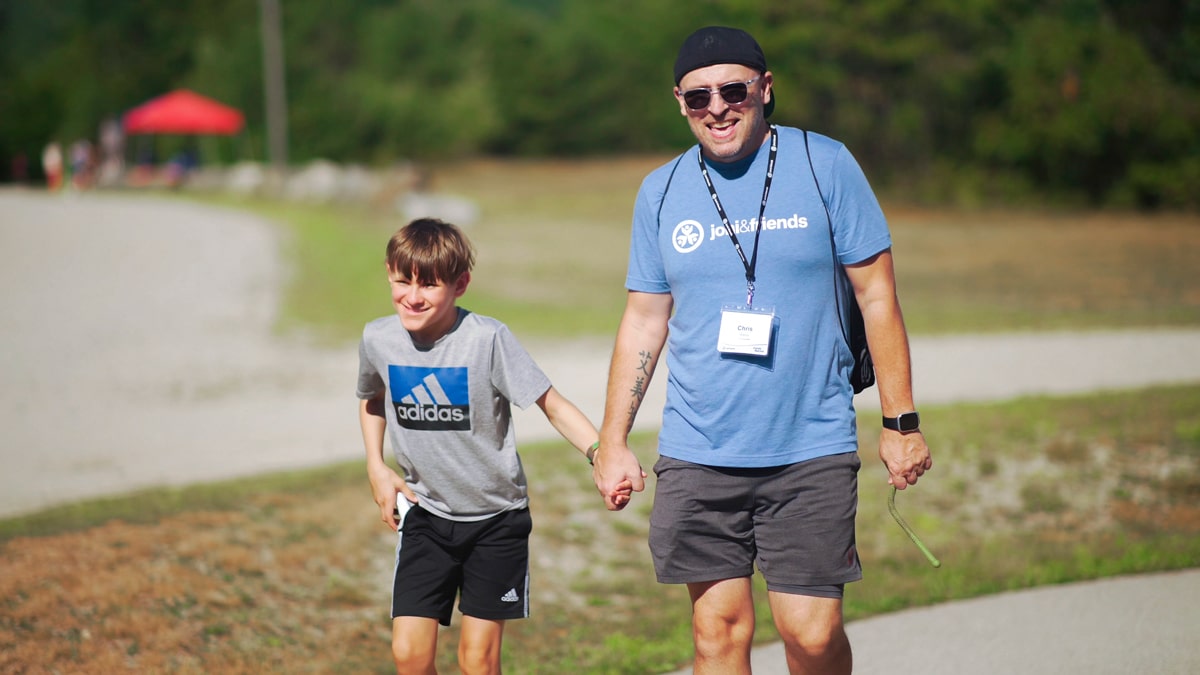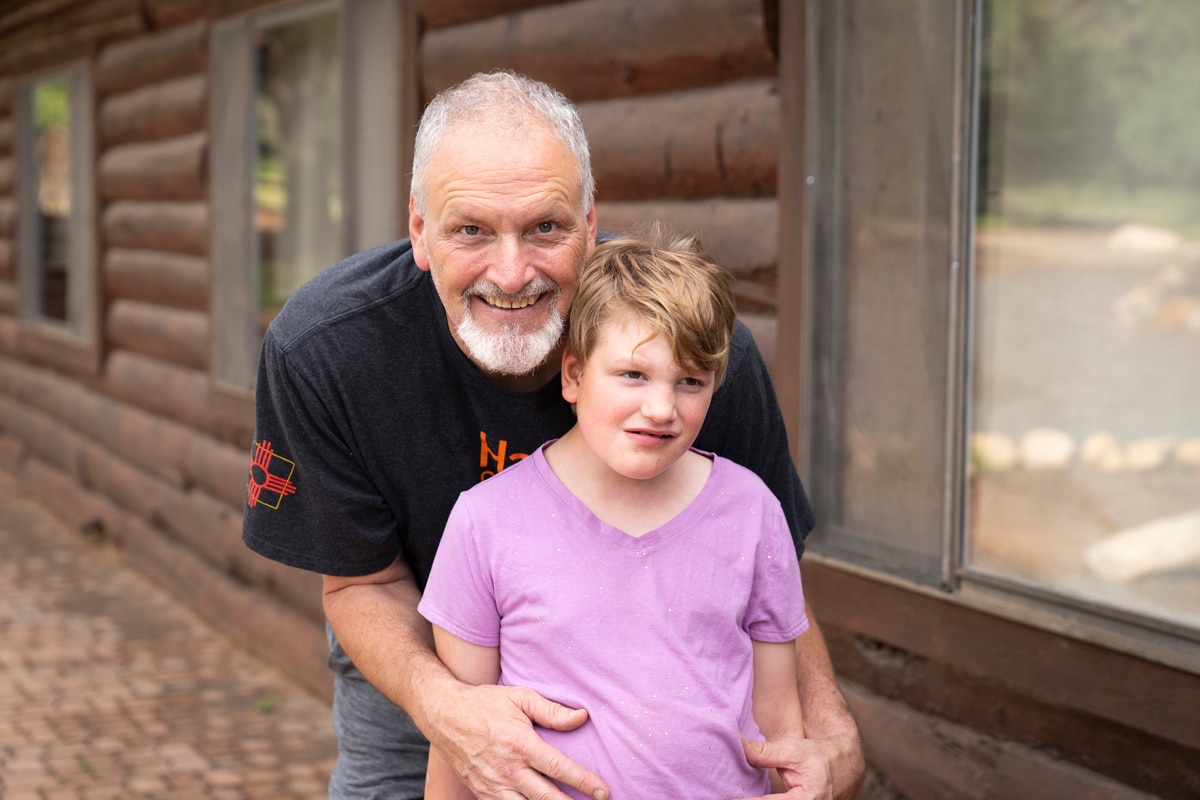Welcoming People With Autism: Four Practical Strategies

People with autism can have a wide variety of skills, abilities, strengths, weaknesses and needs, just like anyone else.
For this reason, the types of supports needed for an individual to fully participate in the life of your church will vary. Like all people, no two people with autism are identical, and therefore, no two people will require identical supports.
That might sound overwhelming, but it’s simpler than it might first appear. With the right tools and strategies for providing supports, you can be prepared to respond well to needs in the moment. Then there’s no need to worry about an unlimited number of possible scenarios. By equipping yourself with tools, and simple guidance on when to use them, you can have confidence to open the doors wide to welcome people with autism into your church.
The types of supports you will need in your toolbox are more easily understood when grouped in four general categories.
Think of them as families of tools. While different jobs may require different types of screwdrivers (flathead vs. Phillips), you can still tell when a screwdriver is a better choice than a hammer. While not exhaustive, these four categories of supports will serve as a solid starting point.
And remember, it’s much more important to become familiar with the gifts, abilities, and needs of the person you are serving, than it is to become an expert on autism in general. You serve specific people, not a general diagnosis. Please note that while many of the examples given below will apply to children, the principles are universal. This is not an exhaustive list, but a starting point to engage your creativity.

1) Communication Supports
Language supports are tools that benefit everyone, not just those with autism. Here are a few ways you can use language to promote understanding and clarity.
-
- Simplify language: Avoid unnecessarily big words. For example, use the word “sick” instead of “upper respiratory infection.”
- Use concrete language: Some people with autism struggle to pick-up on subtle social cues or secondary meanings. Instead of making a general suggestion about being considerate of others, say, “John, you can’t take the ball away from Paul. You must ask first.”
- Avoid idioms: Phrases like, “It’s raining cats and dogs!” may be confusing. Say, “It’s raining really hard.”
- Say what you mean: Be aware of the literal meaning of what you are saying, and any possible unintended consequences. “I have to walk on pins and needles around that person,” could be taken literally and cause confusion for the listener.
- Incorporate gestures: Facial expression, eye-contact, tone, body language, and other nonverbal communication all contribute to the meaning of a sentence. Be sure to communicate fully, utilizing more tools than just words.
- Utilize visuals: Showing is better than telling, but showing and telling is the best of all. Not only are visuals often more engaging, but they are memorable! For example, when telling the story of David and Goliath, let those listening see, hold, and feel five smooth stones.
- Use repetition: Say the same thing a couple of different ways.

2) Schedule Supports
Many people have motion sickness when reading in the car and need to see where they’re going to avoid becoming nauseous. In a similar way, for many people with autism, not being able to anticipate or predict the schedule of events can feel like driving a winding mountain road without seeing where they’re going. To avoid this, clearly communicate what will be happening, the order of the activities, and how long until the next activity. Think about how these supports can be used in your setting.
-
- Provide structure: People with autism are often most comfortable with clear guidelines and objectives. Open-ended activities like “mingling” can be daunting. Providing structured activities and events can help people feel at ease.
- Visual schedules: Providing a schedule using illustrations and icons can bring peace and order to what feels like chaos and disorganization. The visual schedule can be referred to when explaining what comes next.
- Be predictable: Avoid last minute schedule changes. As much as possible, stick to the plan you have established and communicated.
Give warnings prior to transitions: Announcing an upcoming transition will help everyone prepare to move into the next activity. This is especially important if there are changes in expectations between the activities, such as transitioning from singing worship to sitting for a time of teaching. Just because you announce something to the room doesn’t mean you’re being heard by every individual. If someone continues to struggle, personalize your communication to the individual.
-
- Use visual timers or countdowns: This helps an abstract concept like “time” become more concrete. You can see how much time has passed, and how much time is remaining.
- Use “first/then” language: This is essentially verbalizing the schedule. “First, we’ll do a craft, then sing a song of worship. After worship, we’ll have a time of teaching, and then it will be time to go home.”
- Be consistent: Avoid changing too much week-to-week. Having to re-learn routines and schedules is a stressor that can be avoided by maintaining as much consistency as possible.
- Give a limited number of choices: Giving 2-3 options for an activity instead of an open-ended invitation can empower someone to make a choice without becoming overwhelmed. “Would you like to color or play with the ball?” instead of, “What would you like to do?” Once a decision is made, relationships can begin.

3) Sensory Supports
While not always a part of autism, many people with autism also have a sensory processing disorder.
They may seek out certain sensory sensations, like squeezing a ball. Others may avoid specific sensations like the smell of a cleaning solution.
Being aware of sensory needs is vital in creating a welcoming environment for those with autism. But how do we accommodate sensory needs?
-
- Minimize stimulation: Be aware of how your environment engages the senses. Visual, auditory, olfactory, and tactile inputs can add up quickly! Pay attention to the intensity and number of things engaging people’s senses. Loud music, flashing lights, and fans combined may become overwhelming. Perfumes, cologne, and even strong-smelling soaps or shampoo can also be an overlooked source of stimulation.
- Provide quiet zones: For those who are (or are becoming) overstimulated, a designated quiet space can help avoid a meltdown.
- Provide sensory spaces: For those who are seeking a certain sensation, providing opportunities for them to experience those sensations is calming. This might be as complex as a “sensory room,” or as simple as a “sensory bag.” A sensory bag is a small collection of items like fidget toys and a stuffed animal that can help meet sensory needs.
- Accommodate “stimming” behaviors: Stimming is a shorthand for “self-stimulation,” and is a way that someone with a sensory processing disorder seeks to regulate their senses. It might be something like hand-flapping, rocking, repeating a word or phrase, or pacing. Allowing these behaviors may be the only way this person can successfully participate with their peers.
4) Social Supports
While physical issues (like an overwhelming sensory environment) can impact someone’s ability to participate, social issues are often the greater challenge. While you can more easily make a change to the physical environment, you can’t force people to engage with one another. So how can we make it easier for people with autism and their typical peers to enter into relationship? Here are a few ways to encourage social interaction.
-
- Promote social acceptance and friendship by your actions: Modeling interaction and friendship with people with autism shows others how they can be a friend too. When those who struggle to see past a diagnosis see your interactions, they are more likely to engage those who behave differently.
- Create structure for relationships to form: You can never force friendships, but you can create opportunities for them to form. Offering structured opportunities for interaction such as service teams, social events, or small groups can offer opportunity to develop genuine friendships.
- Discuss disability publicly: The power of simply acknowledging the church’s desire to be a place of welcome for people with disabilities helps shape the culture of the church. Consider how you can prepare the people in your church to welcome those with autism into fellowship and friendship.
With these tools, and others you will learn along the way, we can work towards a world where every church evangelizes, disciples, and serves people with autism.

Connect with a Ministry Mentor
You can contact a Joni and Friends church training mentor directly at [email protected] or by calling (818) 707-5664. We’d love to walk with you as you seek God’s heart for people with disabilities in your church.
Want More Resources?
For more, check out our Irresistible Church book “Pathways to Belonging.”






